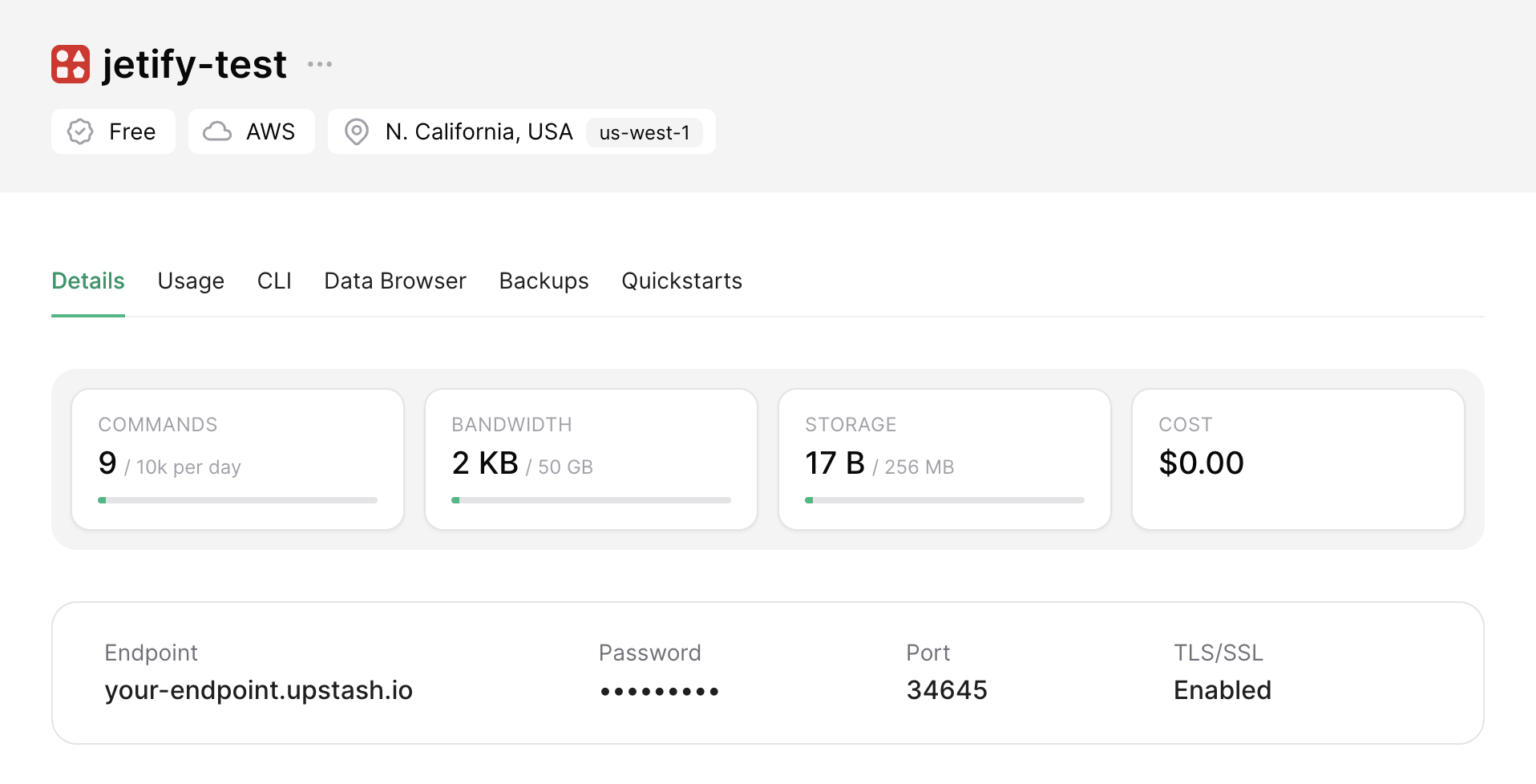Using Upstash Redis with Jetify Cloud
- Create a Redis Database in Upstash. Select
the Database’s name and region, and then click the Create button
- If you don’t already have an Upstash account, you can create a free one to test with Jetify Cloud
- After clicking the Create button, you’ll see a page with the connection details for your Database. Copy the Endpoint, Password, and Port — you’ll need these to connect from Jetify Cloud.

- Go to the Jetify Dashboard for your project, and navigate to Secrets. Create the following Secrets
in the
Prodenvironment:REDIS_HOST: your Upstash DB Endpoint URLREDIS_PASSWORD: your Upstash DB PasswordREDIS_PORT: your Upstash DB Port
If you want to use your Database locally or in a preview environment, you can also set these
environment variables for the
dev and preview environment

